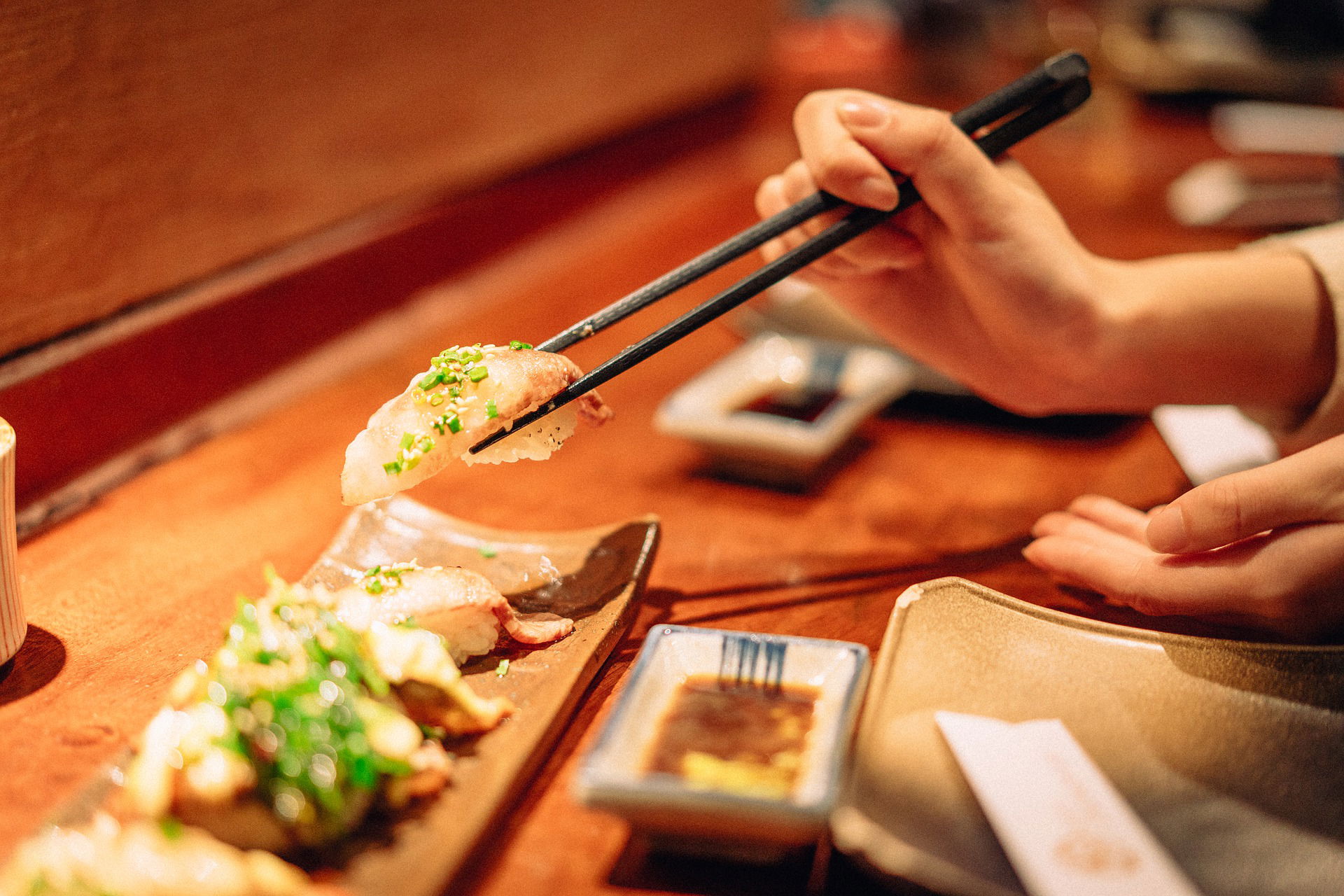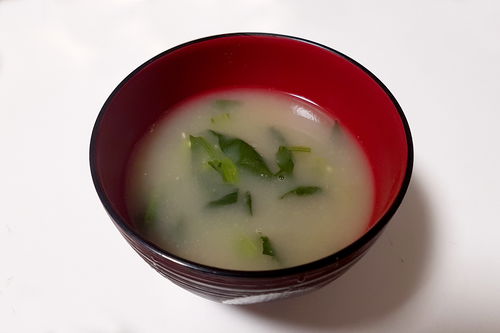Table of contents:

Japanese cuisine is already special in itself. But to make it even more authentic, it should be served correctly. In addition to the food, the right dishes are a very important part of Japanese food culture.
As is typical for Japan, the design is not only beautiful, but also incredibly practical. If Japanese cuisine is still new to you, you can of course also use your normal dishes and try it out.
Food as an Experience
Since food plays an important role in Japanese society, some points such as time need to be considered. Japanese people often have fixed mealtimes and like to stick to them. For an intense taste experience, color-coordinated dishes are used. Traditionally, the different side dishes and the main course are served on separate dishes. In addition, a pleasant atmosphere is important. People like to eat in restaurants or at home with friends, but not on the street or while standing.
What kind of dishes are used in Japan?
There is a special dish for each of the different dishes. Bowls for rice and ramen, dipping bowls for soy sauce, bowls with lids for miso soup and much more.
As already mentioned, a dish consists of several small “dishes”. These are served separately on plates and bowls on a large tray. The most important part of the dish (usually meat or fish) is in the middle of the tray, the other side dishes are arranged asymmetrically around it.
The chopsticks lie on a chopstick holder in front of the tray, with the thinner side to the left.
Japan vs. Europe
The dishes we know from Germany are often made of porcelain and therefore quite heavy. Since in Japan the bowls and plates are often held in the hand and brought to the mouth, you need a lighter material to be able to eat comfortably. Therefore, Japanese dishes are mostly made of clay.
Since you don't eat with cutlery, but with chopsticks, the clay is not scratched by the metal. Many bowls are very deep, and you wouldn't be able to reach the bottom easily with a knife, fork or spoon.
Have you ever wondered why it looks so “messy” on Japanese tables and there is no uniform tableware set like in Europe? This is because the dishes should above all be perfect for the dish and not for the rest of the dishes. However, together they still create a harmonious overall picture.
What kinds of dishes are there?
There are all sorts of different dishes in Japan, but they are roughly divided into bowls, cutlery, plates and tea sets. In the following, you will find a brief overview and then we will take a closer look at the different categories and characteristics.
Bowls in Japan
Bowls are the heart and soul of every meal in Japan. They differ in depth, size and whether they have a lid. “Chawan” is the rice bowl, “Donburi-Bachi” is used for noodles and “Shiru-Wan” is used to enjoy miso soup.
Cutlery in Japan
Since in Japan the food is mostly already served in bite-sized pieces, chopsticks are mainly used. Western cutlery is rarely used, as in feudal Japan pointed objects, such as a knife, were interpreted as a threatening gesture. Chopsticks come in a wide variety of colors and materials, such as wood, porcelain or even metal. European cutlery is only rarely used, for example for curry.
Plates in Japan
The main course is served on a “Yakimon-zara”, a flat, rectangular plate. This is located in the middle of the tray. All other side dishes are placed separately on different sized plates and bowls around it.
Tea set in Japan
When you think of Japan, you will surely remember the Japanese tea ceremony. Tea plays an important role in Japanese culture. Therefore, it is not surprising that the tea set takes an equally important place as the tea itself. The Japanese teacup, also known as “Chawan”, has a special place in Japanese tableware and, unlike the European cup, has no handle.
Okasu, the Side Dish Dishes
As you know, every dish and every side dish has its own place in Japan. So on the tray there are many smaller and larger bowls, dishes and plates. The small bowls for sauce are called “Mame-zara”, while in “Kobachi” - small bowls - salad and special dishes are served. The small plates on which vegetables, tofu and co. are located are called “Ko-zara”. When combining these, you can let your creativity run wild, there is no specific order.


Noodle Bowl
Besides rice, noodles are an important part of Japanese cuisine. To present them well, there are special bowls for them called “Donburi-bachi”. They are particularly large, wide and deep so that noodle soups, udon or soba do not overflow at the sides. Occasionally, rice dishes are also served in them. If the dish is the “main course”, the Donburi is also placed in the middle of the tray instead of the “Yakimon-zara”. Great emphasis is also placed on the presentation of the food in the Donburi bowl. They are decorated with various toppings with a lot of attention to detail.
Soup Bowl for Miso Shiru
Bowls for miso shiru soup are quite small, with a diameter of only 10-13 centimeters, because they are drunk directly from them. That's why they are also usually made of wood so that they don't get too hot when you touch them. However, since there are often ingredients in the soup that are eaten with chopsticks, the opening is still wide enough so that you can easily reach them. Very often these bowls also have a lid so that the soup doesn't cool down. The delicious scent comes straight at you when you take the lid off.
Rice Bowl
Rice is probably the most important and best-known ingredient in Japanese cuisine. Naturally, there are also several different bowls for it. Rice is served so that a small mountain is created, which can be seen up to the edge.
On the one hand there is the “Meshiwan”, which is similar in size to the bowl of the miso soup. But unlike the miso bowls, which are made of wood, the Meshiwan are mostly made of clay or porcelain and have no lid.
Then there are “Hankis”, these are very similar to the Meshiwan, with the difference that they have a lid.
Hankis, which hold large portions of rice for several people, are called “Ohitsu”.
In many German households, it is customary for each family member to have their own cup. In Japan, the rice bowl takes over this part. The appearance and size depend on the taste of the person who owns it.

Ramen Bowl
Another very well-known Japanese dish is ramen. And you may have already noticed the special ramen bowl “Ramen Bachi”. Almost a liter and a half of liquid fits into these bowls and they are quite large, with an opening of up to 20 centimeters. Ramen Bachi look a bit like a funnel that gets wider towards the top. This naturally has a practical reason, as you can see the individual ingredients or toppings well and easily take them out with the chopsticks. Ramen is a particularly popular dish in winter because it warms you up nicely from the inside.
Dishes for Sushi or Sashimi
Sushi, as a typical Japanese dish, cannot be missing. And anyone who has ever eaten sushi knows that it can get very crowded on the table very quickly with all the little plates and bowls.
Each person gets their own sushi service for eating, which consists of chopsticks, a chopstick holder, small dipping bowls for soy sauce, ginger and wasabi, as well as a plate.
The chopstick holders, like the chopsticks, come in a wide variety of designs and shapes. The dipping bowls are rectangular or round, flat bowls with a diameter of less than 10 centimeters.
The sushi itself is arranged on an extra plate in the middle of the table. The so-called “Funamoriki” is a flat, boat-shaped dish that presents the sushi particularly well.



Comments